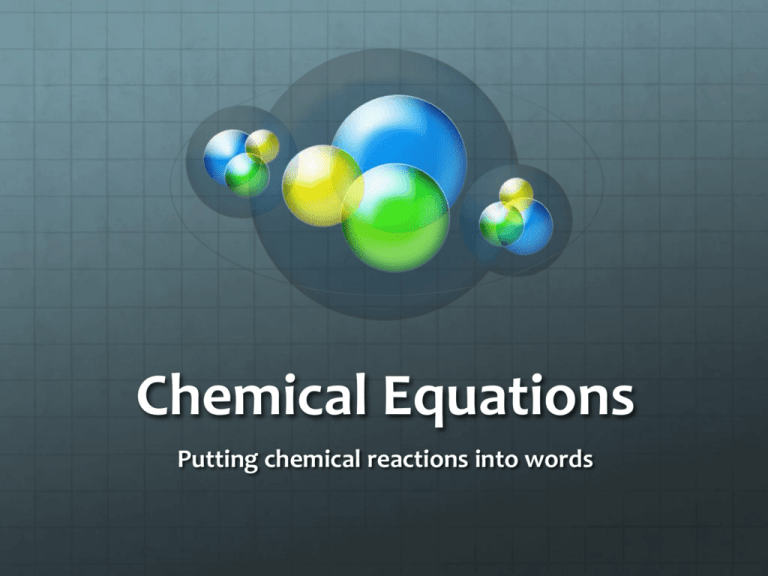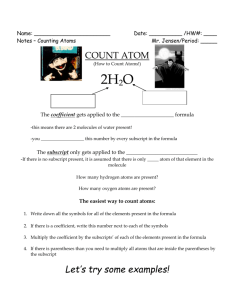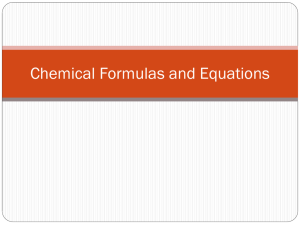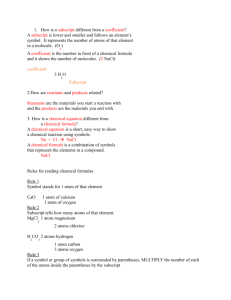Chemical Equations
advertisement

Chemical Equations Putting chemical reactions into words A chemical equation is a symbolic representation of a chemical reaction. Reactants Products Reactants yield products Reactants produce products Equation Example: The burning of methane gas in oxygen is: CH4 + 2 O2 → CO2 + 2 H2O Review: Element Symbols All elements are represented by a 1 or 2 letter symbol For example C = Carbon Ne = Neon O = Oxygen The first letter is capitalized, the second is not Chemical Formulas Shows the elements & number of atoms of each element in a molecule/compound H2SO4 Elements Subscript Hydrogen; 2 atoms Sulfur: 1 atom Oxygen: 4 atoms 7 atoms total The subscript describes the number of atoms of an element If there is not a subscript listed, it is understood to be 1. Coefficients A formula may begin with a number. If there is no number, then “1” is understood to be in front of the formula. This number is called the coefficient. The coefficient represents the number of molecules of that compound or atom needed in the reaction. For example: 2H2SO4 – 2 molecules of Sulfuric Acid 2H2SO4 – 2 molecules of Sulfuric Acid A coefficient is distributed to ALL elements in a compound 2 – H2 (for a total of 4 H atoms) 2 – S (for a total of 2 S atoms) 2 – O4 (for a total of 8 O atoms) Reading Chemical Equations Each side of an equation represents a combination of chemicals. The combination is written as a set of chemical formulas, separated by + symbols. CH4 + 2 O2 → CO2 + 2 H2O Reading Chemical Equations The two sides of the equation are separated by an arrow. Reactants: The combination of chemicals before the reaction are on the left side of the arrow Products: The right side indicates the combination of chemicals after the reaction. For Example: 4Na + O2 → 2Na2O In this reaction, sodium (Na) and oxygen (O2) react to make a single molecule, Na2O Label: Reactants, products, subscripts, coefficients Atom Counts 1. List the element symbols present (under the arrow). 2. Count the number of atoms for EACH element on the reactants side and also on the products side. 3. If both sides are equal for EVERY element, the equation is balanced. List all element symbols and the number of atoms of each Na + Cl Is it balanced? NaCl List the element symbols and the number of atoms of each 2K + Cl2 Is it balanced? 2KCl Chemical Equations and Heat Exothermic Reactions – chemical equations that produce heat. Heat is a product. Endothermic Reactions – chemical equations that use heat. Heat is a reactant.






